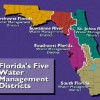In the southeastern United States, many agricultural, vulnerable, and rural communities (AVRCs) must cope with natural disasters regularly. These natural disasters not only harm communities, crops, and livelihoods, but also can negatively impact the mental health of affected individuals, including those living in AVRCs. The purposes of this new 3-page article are to (1) provide tips on identifying specific individuals who could qualify as community leaders and (2) provide details on how partnering with community leaders can be beneficial for mental health communication and outreach. Written by Lisa Lundy, Jacqueline Aenlle, Ricky Telg, Tracy Irani, Angie Lindsey, Ashley Mcleod-Morin, Michaela Kandzer, and Phillip Stokes, and published by the UF/IFAS Department of Agricultural Education and Communication.
https://edis.ifas.ufl.edu/wc383
Tag: Tracy Irani
Writing and Designing for the Web series
Knowing how to create and design a website is a valuable skill. This four-part series explains general tenants of good web design, covers the terminology and techniques involved in creating appealing, user-friendly websites, and also discusses basic HTML coding and developing visual elements for the web. Written by Ricky Telg, Laura Gorham, and Tracy Irani, and published by the UF Department of Agricultural Education and Communication, August 2015.
http://edis.ifas.ufl.edu/topic_series_writing_and_designing_for_the_web
Improving Extension Program Development Using Audience Segmentation
 Developing an impactful Extension program depends on acquiring a deep understanding of the audience’s specific needs and preferences. Audience segmentation allows an agent to address the variability among Extension clientele, in order to deliver the programming and messages that are most meaningful to an audience/clientele segment. This 5-page fact sheet was written by Paul Monaghan, Laura Warner, Ricky Telg and Tracy Irani, and published by the UF Department of Agricultural Education and Communication, November 2014. (UF/IFAS photo Marisol Amador)
Developing an impactful Extension program depends on acquiring a deep understanding of the audience’s specific needs and preferences. Audience segmentation allows an agent to address the variability among Extension clientele, in order to deliver the programming and messages that are most meaningful to an audience/clientele segment. This 5-page fact sheet was written by Paul Monaghan, Laura Warner, Ricky Telg and Tracy Irani, and published by the UF Department of Agricultural Education and Communication, November 2014. (UF/IFAS photo Marisol Amador)
http://edis.ifas.ufl.edu/wc188
Water Issues in Florida: How Extension Can Facilitate Stakeholder Engagement and Involvement
 This 6-page fact sheet is a brief description of recent discussions and policies surrounding water management, use, and quality in Florida. The goal of this publication is to provide brief, but clear, information about the trends in policies that can be used by Extension agents to increase educated conversations about water issues. Water in Florida is a contested issue, and Extension agents may be called upon as a source of unbiased information by the public. Having an understanding of important agricultural and natural resources issues in Florida, including water, can help facilitate conversation, raise awareness, and lead to informed decision making. Written by Erica Odera, Alexa Lamm, Tracy Irani, Hannah Carter, and Sebastian Galindo-Gonzalez, and published by the UF Department of Agricultural Education and Communication, December 2013.
This 6-page fact sheet is a brief description of recent discussions and policies surrounding water management, use, and quality in Florida. The goal of this publication is to provide brief, but clear, information about the trends in policies that can be used by Extension agents to increase educated conversations about water issues. Water in Florida is a contested issue, and Extension agents may be called upon as a source of unbiased information by the public. Having an understanding of important agricultural and natural resources issues in Florida, including water, can help facilitate conversation, raise awareness, and lead to informed decision making. Written by Erica Odera, Alexa Lamm, Tracy Irani, Hannah Carter, and Sebastian Galindo-Gonzalez, and published by the UF Department of Agricultural Education and Communication, December 2013.
http://edis.ifas.ufl.edu/wc151
Persuasion as a Communication Tool
 Think about a time when you wanted your parents to do something for you, such as buy you a special birthday gift, let you stay up late, or go out with your friends. Your attempts at persuasion probably focused on communicating specific reasons why your parents should take the action you wanted. Persuasion is a communication tool that can be adjusted to convince a single person, or to move an entire audience to a desired action. In this publication you will learn several techniques for persuasive communication. This 2-page fact sheet was written by Laura Gorham, Ricky Telg, and Tracy Irani, and published by the UF Department of Agricultural Education and Communication, July 2013.
Think about a time when you wanted your parents to do something for you, such as buy you a special birthday gift, let you stay up late, or go out with your friends. Your attempts at persuasion probably focused on communicating specific reasons why your parents should take the action you wanted. Persuasion is a communication tool that can be adjusted to convince a single person, or to move an entire audience to a desired action. In this publication you will learn several techniques for persuasive communication. This 2-page fact sheet was written by Laura Gorham, Ricky Telg, and Tracy Irani, and published by the UF Department of Agricultural Education and Communication, July 2013.
http://edis.ifas.ufl.edu/wc144
Persuasion in Messages
 Specific contextual cues are added to media messages that persuade people to think one way or another about an issue and influence their actions. In this publication, you will learn the different ways that the mass media use persuasion and how persuasion encourages the audience to change their attitudes or behavior. This 3-page fact sheet was written by Laura Gorham, Ricky Telg, and Tracy Irani, and published by the UF Department of Agricultural Education and Communication, July 2013.
Specific contextual cues are added to media messages that persuade people to think one way or another about an issue and influence their actions. In this publication, you will learn the different ways that the mass media use persuasion and how persuasion encourages the audience to change their attitudes or behavior. This 3-page fact sheet was written by Laura Gorham, Ricky Telg, and Tracy Irani, and published by the UF Department of Agricultural Education and Communication, July 2013.
http://edis.ifas.ufl.edu/wc145
Persuasive Papers, Speeches, and Campaigns
 Persuasion can be used in written essays, speeches or as part of media campaigns that attempt to influence an audience to change their thinking or behavior. This publication will familiarize you with the tools necessary to develop a persuasive essay, speech, or media campaign. This 3-page fact sheet was written by Laura Gorham, Ricky Telg, and Tracy Irani, and published by the UF Department of Agricultural Education and Communication, July 2013.
Persuasion can be used in written essays, speeches or as part of media campaigns that attempt to influence an audience to change their thinking or behavior. This publication will familiarize you with the tools necessary to develop a persuasive essay, speech, or media campaign. This 3-page fact sheet was written by Laura Gorham, Ricky Telg, and Tracy Irani, and published by the UF Department of Agricultural Education and Communication, July 2013.
http://edis.ifas.ufl.edu/wc146
Planning Special Events
 Learning how to plan special events is an important skill that can benefit you and your organization. This publication is designed to help you understand what special events are and how to conduct them. After reading this publication, you will be able to explain how event sites are chosen, what criteria are used to plan events, and how to handle site permits, contracts, and budgets. You also will learn the five critical stages in planning a special event and how to evaluate an event. This 6-page fact sheet was written by Reba Ellen Hicks, Ricky Telg, and Tracy Irani, and published by the UF Department of Agricultural Education and Communication, July 2013.
Learning how to plan special events is an important skill that can benefit you and your organization. This publication is designed to help you understand what special events are and how to conduct them. After reading this publication, you will be able to explain how event sites are chosen, what criteria are used to plan events, and how to handle site permits, contracts, and budgets. You also will learn the five critical stages in planning a special event and how to evaluate an event. This 6-page fact sheet was written by Reba Ellen Hicks, Ricky Telg, and Tracy Irani, and published by the UF Department of Agricultural Education and Communication, July 2013.
http://edis.ifas.ufl.edu/wc147
Event Marketing and Public Relations
 Marketing your event so that people know about it and are motivated to attend is extremely important. The five P’s of marketing – product, promotion, price, place (location), and public relations – must be taken into consideration in order to have an event that is well attended. This 2-page fact sheet was written by Reba Ellen Hicks, Ricky Telg, and Tracy Irani, and published by the UF Department of Agricultural Education and Communication, July 2013.
Marketing your event so that people know about it and are motivated to attend is extremely important. The five P’s of marketing – product, promotion, price, place (location), and public relations – must be taken into consideration in order to have an event that is well attended. This 2-page fact sheet was written by Reba Ellen Hicks, Ricky Telg, and Tracy Irani, and published by the UF Department of Agricultural Education and Communication, July 2013.
http://edis.ifas.ufl.edu/wc148
A Cooperative Agreement and the Implementation of the Endangered Species Act: How Extension Can Facilitate Stakeholder Involvement and Compliance
 This 4-page fact sheet provides a brief description of the Endangered Species Act and updated action pertaining to the endangered species issue. The goal of this publication is to provide brief but clear information about the legislation and current agreements around this issue that Extension agents can use to increase educated conversations. Written by Chandra Bowden, Alexa Lamm, Tracy Irani, and Sebastian Galindo, and published by the UF Department of Agricultural Education and Communication, May 2013.
This 4-page fact sheet provides a brief description of the Endangered Species Act and updated action pertaining to the endangered species issue. The goal of this publication is to provide brief but clear information about the legislation and current agreements around this issue that Extension agents can use to increase educated conversations. Written by Chandra Bowden, Alexa Lamm, Tracy Irani, and Sebastian Galindo, and published by the UF Department of Agricultural Education and Communication, May 2013.
http://edis.ifas.ufl.edu/wc141
Reconciling Immigration and Agricultural Labor Concerns for a Sustainable State Economy (WC132)
 Immigration in Florida is a contested issue, and having an understanding of this issue can help facilitate communication. This 6-page fact sheet provide brief but clear information about the trends in policies that can be used by Extension agents to increase educated conversations around immigration issues. Written by Agricultural Education and Communication, and published by the UF Department of Chandra Bowden, Alexa Lamm, Hannah Carter, Tracy Irani, and Sebastian Galindo, December 2012.
Immigration in Florida is a contested issue, and having an understanding of this issue can help facilitate communication. This 6-page fact sheet provide brief but clear information about the trends in policies that can be used by Extension agents to increase educated conversations around immigration issues. Written by Agricultural Education and Communication, and published by the UF Department of Chandra Bowden, Alexa Lamm, Hannah Carter, Tracy Irani, and Sebastian Galindo, December 2012.
http://edis.ifas.ufl.edu/wc132
ENH1119/EP384 Use of Reclaimed Water for Irrigation in Container Nurseries
ENH-1119, an 8-page illustrated fact sheet by Tom Yeager, Claudia Larsen, Joe von Merveldt, and Tracy Irani, informs container nursery producers about irrigating with water processed from municipal sewage wastewater, the results of evaluations of overhead sprinkler irrigation systems, where to get it, and special application procedures and cautions. Includes references and a glossary. Published by the UF Department of Environmental Horticulture, May 2009.
http://edis.ifas.ufl.edu/EP384
AEC396/WC077 Extension Marketing: Building a Successful Local Extension Marketing Campaign
AEC-396, a 2-page fact sheet by Ricky Telg, Tracy Irani, and James Varvorines, focuses on the foundations of marketing communications for local Cooperative Extension programs. Includes references. Published by the UF Department of Agricultural Education and Communications, November 2008.
http://edis.ifas.ufl.edu/WC077
AEC398/WC079 Extension Marketing: Integrated Marketing
AEC-398, a 3-page fact sheet by Ricky Telg, Tracy Irani, and James Varvorines, focuses on integrating communication elements into the marketing of Extension programs. Published by the UF Department of Agricultural Education and Communications, November 2008.
http://edis.ifas.ufl.edu/WC079
AEC399/WC080 Extension Marketing: Creative and Media Strategies
AEC399, a 4-page illistrated fact sheet by Ricky Telg, Tracy Irani, and James Varvorines, focuses on creative and media strategies for developing marketing campaigns for local Cooperative Extension programs. Published by the UF Department of Agricultural Education and Communications, November 2008.
http://edis.ifas.ufl.edu/WC080
AEC397/WC078 Extension Marketing: Campaign Planning and Audience Analysis
AEC-397, a 5-page fact sheet by Ricky Telg, Tracy Irani, and James Varvorines, focuses on the basics of campaign planning and audience analysis development. Published by the UF Department of Agricultural Education and Communications, November 2008.
http://edis.ifas.ufl.edu/WC078
AEC400/WC081 Extension Marketing: Budgets and Evaluation
AEC-400, a 3-page fact sheet by Ricky Telg, Tracy Irani, and James Varvorines, describes ways to stretch marketing budget dollars and then how to determine whether the communications campaign was successful. Includes a sample evaluation form. Published by the UF Department of Agricultural Education and Communication, November 2008.
http://edis.ifas.ufl.edu/WC081

